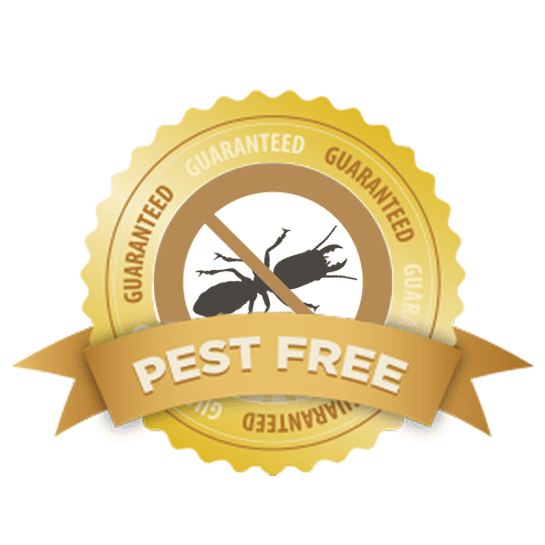A1 Bed Bug Exterminator Charlotte - Specialized Bed Bug Removal
A1 Bed Bug Exterminator Charlotte - Specialized Bed Bug Removal
Blog Article
Bed Insect Treatment Break Down: Contrasting Chemical Vs. Non-Chemical Solutions
In the world of pest control, particularly when handling the persistent concern of bed bugs, the selection between chemical and non-chemical treatment services can be a crucial one. Both techniques supply distinct benefits and downsides, influencing elements such as effectiveness, safety factors to consider, and general cost. By analyzing the nuanced information of each method, a clearer understanding of which course to seek in resolving a bed pest infestation can be obtained.
Performance of Chemical Treatments
Chemical therapies for bed bug invasions have actually been commonly identified for their rapid and potent effectiveness in removing these pests. When taking into consideration the efficiency of chemical therapies, it is important to recognize that they can supply a quick and thorough option to a bed pest problem. Expert pest control experts frequently rely upon pesticides to target bed pests at different stages of their life cycle, consisting of fairies, eggs, and adults. These chemicals typically work by interrupting the bed insects' nerve system, resulting in paralysis and eventual death.
Furthermore, chemical therapies have the advantage of supplying residual impacts, suggesting that they can proceed to eliminate bed pests even after the first application. This residual action is particularly helpful in combating any kind of possible re-infestations. In addition, the fast action of chemical therapies can bring relief to people dealing with severe bed pest infestations, permitting them to regain control of their home quickly.
Security Worry About Chemical Solutions
One vital aspect that requires careful consideration when making use of chemical options for bed insect treatment is ensuring the safety and security of residents and the atmosphere. Direct exposure to specific chemicals utilized in bed bug treatments can lead to breathing issues, skin irritability, or other negative reactions, especially in people with pre-existing conditions or level of sensitivities.
Moreover, the ecological influence of chemical remedies is one more significant factor to consider. Some pesticides utilized in bed insect therapies might be harmful to advantageous pests, wild animals, and ecological communities if they seep into the soil or water supply. It is vital to make use of chemical treatments carefully, adhering to safety and security guidelines, and considering less toxic alternatives to alleviate these threats and guarantee the effective and secure management of bed pest problems.
Benefits of Non-Chemical Techniques
Considering the potential security worries and ecological influence associated with chemical solutions for bed insect treatment, discovering non-chemical approaches provides an appealing choice with a number of distinct benefits. Non-chemical treatments are ecologically friendly, as they do not contribute to air or water pollution, making them a sustainable choice for bug control.
In addition, non-chemical remedies can be reliable in targeting bed bugs, consisting of hard-to-reach areas where chemical treatments might not pass through. Techniques such as warmth therapy, vacuuming, steam cleaning, and mattress coverings give complete elimination without the usage of damaging chemicals. Moreover, non-chemical techniques can be much less turbulent, needing very little prep work and enabling quicker reentry right into treated areas. In general, selecting non-chemical bed insect therapy approaches not just focuses on safety and security and environmental management yet likewise makes certain effective and extensive pest control.
Limitations of Non-Chemical Treatments

Furthermore, non-chemical therapies often call for multiple applications to accomplish successful obliteration. This can be time-consuming and may not always ensure total removal of all bed insects and their eggs, especially in hard-to-reach or hidden areas.
Moreover, the success of non-chemical treatments greatly relies upon appropriate implementation and thoroughness, which can be testing for individuals without specialist competence. Insufficient application of non-chemical methods may result in incomplete eradication, resulting in persistent problems and the demand for extra treatments.
For that reason, while non-chemical treatments have their advantages, it is important to acknowledge these restrictions and consider them when figuring out one of the most reliable technique for managing bed bug problems.
Expense Contrast: Chemical Vs. Non-Chemical Options
Given the constraints associated with non-chemical treatments, a crucial aspect to examine in the context of bed insect management is the cost comparison between chemical and non-chemical alternatives. Chemical therapies commonly involve the application of pesticides by specialists, which can vary from $250 to $900 per area, relying on the seriousness of the invasion and the dimension of the area to be treated. In comparison, non-chemical treatments like warmth treatment or heavy steam can be a lot more pricey, with expenses varying from $1,000 to $6,000 for a whole home. While the initial expense of chemical treatments may seem lower, several treatments might be needed to completely eradicate the problem, possibly increasing the overall expense. On the various other hand, non-chemical options might give a more green and sustainable remedy, although they can be cost-prohibitive for some people. Eventually, when thinking about the price of bed pest treatment alternatives, it is very important to consider the in advance costs versus the efficiency and long-term sustainability of the picked method.
Conclusion

Considering the possible safety worries and environmental influence associated with chemical services check this site out for bed pest therapy, exploring non-chemical approaches presents an appealing option with several unique advantages.Provided the constraints connected with non-chemical treatments, an important facet to evaluate in the context of bed pest administration is the expense comparison between chemical and non-chemical alternatives. In contrast, non-chemical therapies like warm treatment or vapor can be much more costly, with costs varying from $1,000 to $6,000 for an entire home. While the preliminary price of chemical treatments might appear reduced, several treatments may be called for to totally eliminate the infestation, possibly increasing the total price.In final thought, when contrasting chemical and non-chemical bed pest therapy alternatives, it is crucial to consider effectiveness, safety and security, advantages, restrictions, and price.
Report this page